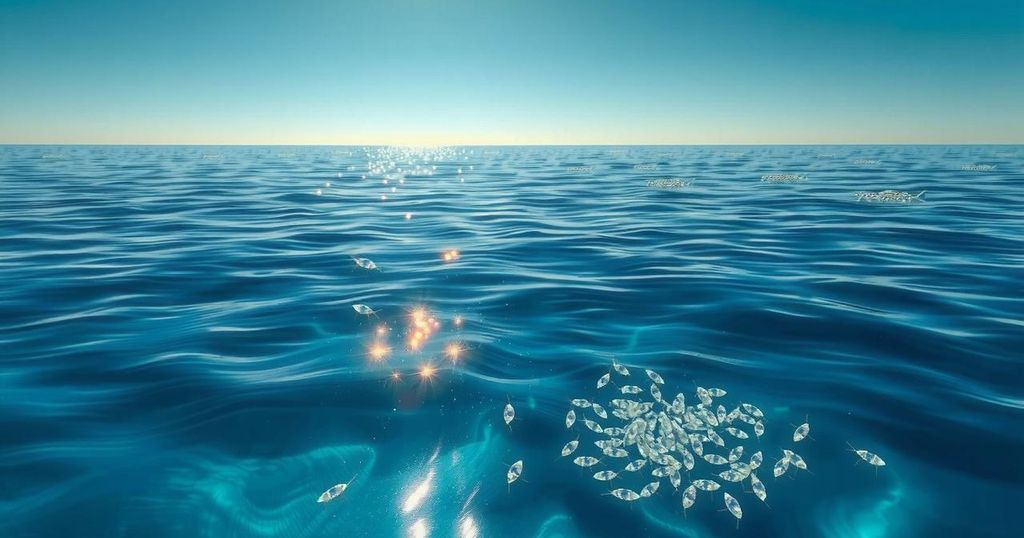An international project called ‘Krill from Space’ aims to monitor Antarctic krill populations using satellite technology. This initiative is crucial for informing fishing regulations and promoting conservation efforts, as krill are fundamental to the marine food web. The project emphasizes the need for better management practices amidst climate change pressures and the decline of protective sea ice.
A new international collaboration has emerged to monitor the population of Antarctic krill, a crucial element of the marine ecosystem. Utilizing advanced satellite technology, this initiative aims to provide precise data that will assist in regulating fishing activities in the Southern Ocean. Notably, the project relies on observing variations in red coloration from space, which are indicative of krill concentrations, a tiny shrimp species integral to the region’s food web.
Krill serve as foundational organisms in the marine food chain, supporting a variety of species such as humpback and blue whales, various squid, and numerous penguin species. When their populations peak, they can number up to 10,000 individuals per cubic meter of water, significantly impacting the ocean’s color viewed from space. The initiative, termed ‘Krill from Space,’ was introduced at the recent COP26 meeting in Baku, Azerbaijan, featuring collaboration from organizations like the World Wildlife Fund and the British Antarctic Survey.
Dr. Cait McCarry from the University of Strathclyde discussed the measurement process that involves monitoring how seawater absorbs light as krill are introduced. The necessity for improved management of krill populations arises from declines in sea ice and escalating industrial fishing activities. Rod Downie of WWF-UK emphasized the urgency of managing krill habitats within marine protected areas and described this satellite monitoring initiative as a potentially transformative tool for conservation efforts.
Krill are believed to play a significant role in the oceanic carbon cycle, feeding on phytoplankton that absorb CO2 and transporting it to the ocean floor through their waste. Oceanographic Magazine reports a concerning trend of shrinking krill populations and a southward shift in their distribution due to rising sea temperatures and the loss of sea ice.
David McKee from the University of Strathclyde hailed this project as a groundbreaking method to monitor krill swarms at the ocean surface, crucial feeding grounds for marine species including whales. He expressed enthusiasm for the partnership with WWF and BAS, underlining the project’s goal of contributing to the conservation and sustainable management of this imperative species in Antarctica.
In summary, the ‘Krill from Space’ initiative represents a significant advancement in ecological monitoring, targeting a vital species within the Antarctic marine environment. By harnessing satellite technology, the collaboration seeks to enhance our understanding of krill populations and their ecological role, addressing urgent conservation needs fueled by environmental changes and fishing pressures in the Southern Ocean.
Original Source: www.goodnewsnetwork.org




